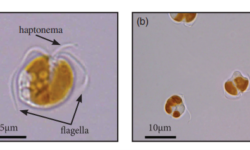Welcome to the Polish Phycological Society website!
The idea of establishing the Polish Phycological Society emerged in September 2004 during the session of the Phycological Section of the Polish Botanical Society (PBS) Congress in Toruń and Bydgoszcz. A year later in May 2005, during the Congress of the Phycological Section of the PBS in Krynica Morska, the General Assembly adopted a resolution to establish a Polish Phycological Society bringing together Polish phycologists from scientific institutions, universities and field stations conducting research on taxonomy and ecology of cyanobacteria and algae.
The Polish Phycological Society was registered on 7 of December 2005 in District Court in Poznań. The headquarters of the PPS is located at Department of Hydrobiology, Faculty of Biology, Adam Mickiewicz University, Umultowska street 89, 61-614 Poznań, Poland.
News
41st International Conference of the Polish Phycological Society
DIVERSITY AND ECOLOGY OF ALGAE: SPATIAL AND TEMPORAL CHANGES We cordially invite you to participate in the 41st edition of the International Conference of the Polish…
International Conference on Toxic Cyanobacteria (ICTC13)!
41st International Conference of the Polish Phycological Society
Curator (f/m/d) in the field of Mycology/Phycology at the SNSB (Munich/Germany)
Dear members of systematic societies across the world, The Bavarian State Collection of Botany is seeking to fill the position of a Curator (f/m/d) in…
LIFE project closing conference
On November 16 and 17, an international conference was held in Vilnius to conclude and summarise the LIFE project „Algae − Economy Based Ecological Service…
Monograph elaborated by Dr. Maciej Wayda ‘Desmids of Gorce Mts. geobotanical studies’
Some information about the harmful haptophyte species Prymnesium parvum
Determination course of euglenoids
Harmful blooms of Prymnesium parvum in freshwaters – consequences and mitigation measures
We would like to invite you to the online conference organized by the Institute of Environmental Protection – National Research Institute ‘Harmful blooms of Prymnesium parvum…










